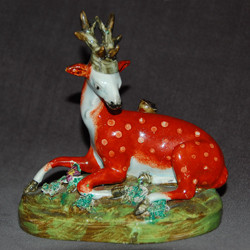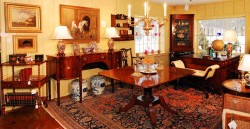Vocabulary of the Antique Trade – Antique what does it mean?
By Hannah Crouthamel on Jun 14 in About Antiques
What does it mean to be “old”? To a child, a 20 year old person is “old”; to a 40 year old, a 60 year old is “old”; to a 60 year old person, 80 is “old” and so it goes. “Old” is a subjective term and as such doesn’t clarify what it means to be an antique.
Some definitions insist that an antique be something of high value, but I find that a distinction that is also quite wobbly. What is “high value”? Is that something that is over $1000, $10,000, $100,000? One person’s “high value” is another person’s pin money. Some define antique as coming from an earlier era; again vague and misleading.  The 1990’s were an earlier era, but the items made during that decade do not qualify as antiques. Some definitions require an item to be desirable in order to be an antique.
The 1990’s were an earlier era, but the items made during that decade do not qualify as antiques. Some definitions require an item to be desirable in order to be an antique.
Again, one person’s beautiful and desirable is another’s ghastly and repulsive; where taste is concerned and judgment required, there will be disputes. For that reason most legitimate antique dealers use the definition that the U.S. Customs Service uses: i.e. an item is an antique if it is over 100 years old. That same rule is used by many other countries, as well. Some items, like cars and oriental carpets only need to be 50 years old to be antique, but in general the 100 year old standard is what defines an antique. Desirability and monetary value, on the other hand, are determined by the marketplace, not by legal definitions.
After one determines the age of an item, it can either be called or not called an antique. Fine! But sometimes, like life in general, things aren’t either black or white. Sometimes there has been so much restoration to an item that it has little that is antique left to it. A dining table that has antique legs, but a new top does not have enough that is original to the table to be considered an antique, but it can still be an attractive table and have value, just not the same value that it would have had had the top and legs been original. A chest of drawers made from pine boards that used to be floorboards in a 200 year old barn, is not considered an antique chest of drawers, because it didn’t start off as a chest, it started off as floorboards. If the floorboards were still in that barn, still used as floorboards, they could reasonably be called antique floorboards.
How much restoration is allowable for an item to be still considered antique is often open for debate. At the extremes it is easy, items made yesterday from old components are not considered antique; items that have never been touched in any way (repaired or restored) and were made over 100 years ago are antique. Generally speaking honest repairs do not make an item less of an antique; a patch in a drawer, a new foot on a table (often because the old one was smashed beyond repair), replaced handles on drawers all are acceptable repairs.  Some repairs affect the value or desirability of an antique; others do not. But an 18th century chest of drawers that has new bracket feet, is still an antique; a staffordshire early 19th century figure of a buck that has had its horns restored or replaced is still an antique because both are what they originally started off to be (the buck has not been repainted to be an antelope, the chest has not been made into a hghboy). There could be volumes written about what is acceptable restoration and what is not. In the end, however, the marketplace determines the value and the buyer must consider whether the restoration is too extensive for the piece to be included in his or her own collection.
Some repairs affect the value or desirability of an antique; others do not. But an 18th century chest of drawers that has new bracket feet, is still an antique; a staffordshire early 19th century figure of a buck that has had its horns restored or replaced is still an antique because both are what they originally started off to be (the buck has not been repainted to be an antelope, the chest has not been made into a hghboy). There could be volumes written about what is acceptable restoration and what is not. In the end, however, the marketplace determines the value and the buyer must consider whether the restoration is too extensive for the piece to be included in his or her own collection.
Antiques by their very nature are often not perfect; they have lived through at least 100 years and often many more than that. Time and events can change the looks of an item, sometimes adding “character,” often adding softness from years of polishing and use. Sometimes there is more abuse than just use. It is up to the buyer to decide if a particular item is worthy of becoming part of his or her life and collection. That decision can often be made easier by discussing the pros and cons with a dealer or other collector who is trusted and who will lend insight into the purchase. Some things to think about and ask about which often help to make a decision easier are: How rare is this item? What makes this item special — Size? Condition? Timber? Color? Patina? Detailing? Provenance? Am I likely to find another in a reasonable length of time that would have less restoration or be a better size for my requirements? Would the price be hugely higher if it were found? Developing a good relationship with a dealer whom you trust, who is willing to spend some time increasing your knowledge and helping to train your eye is often key to creating a collection or furnishing your home with honest antiques that bring pleasure to your daily life.

